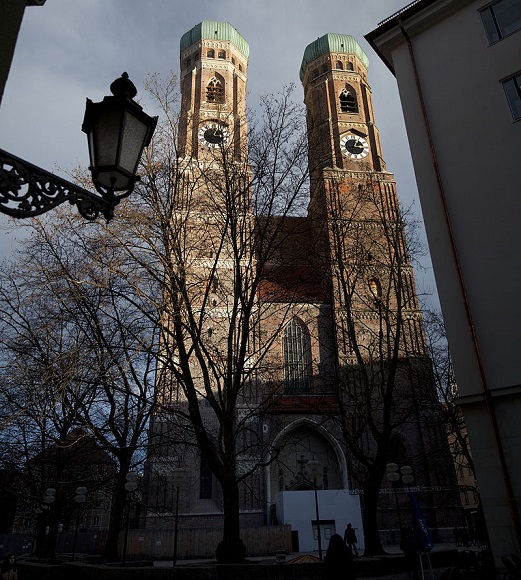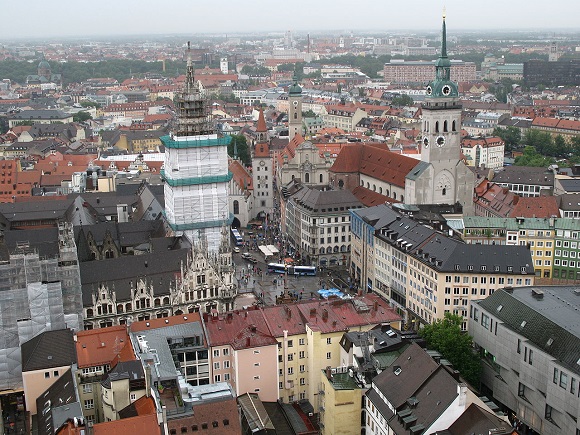Frauenkirche
Alter Hof & Marienplatz are a breath away from the Frauenkirche, another important landmark that can also serve as a reference point or navigation mark. The enormous twin towers of the Dom zu Unserer Lieben Frau or the Cathedral of Our Dear Lady better known as Frauenkirche can be seen from miles away.
After the division of Bavaria & Munich’s upgrading into a capital & ducal residence in 1255, the city’s population increased exponentially in just a few years making the construction of a new parish church, in addition to Alte Peter Church, necessary. That church was only slightly larger than St. Peter, showing the Wittelsbachs’ need to state their claim over the previous episcopal rule.

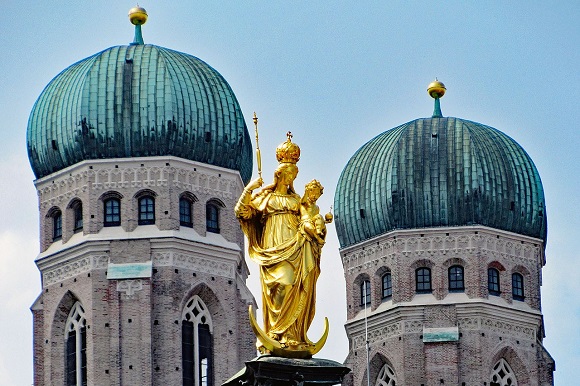
The three-nave Late Romanesque basilica with a double tower front was extended to include a larger chancel at the beginning of the 14th century. In 1468 under the instructions of Duke Sigismund, a patron of the Gothic revival arts, a new church this time in Gothic style was erected to become a symbol of a new more powerful, and ambitious city.
The enormous cathedral was all completed in 1488, save a minor detail. The typical Gothic church’s open-work spires could not be completed due to a lack of resources. Thirty-five years later a much more budget-friendly design was finally chosen inspired by the late-Byzantine style of the Dome of the Rock in Jerusalem.
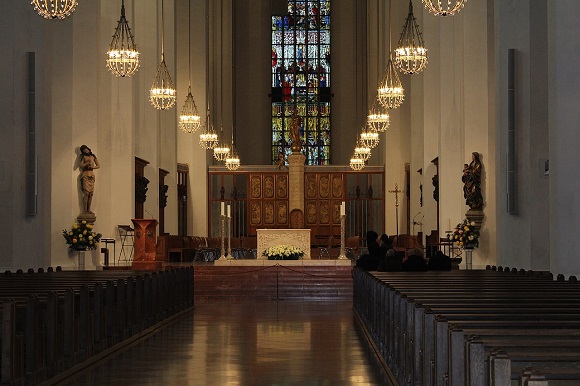
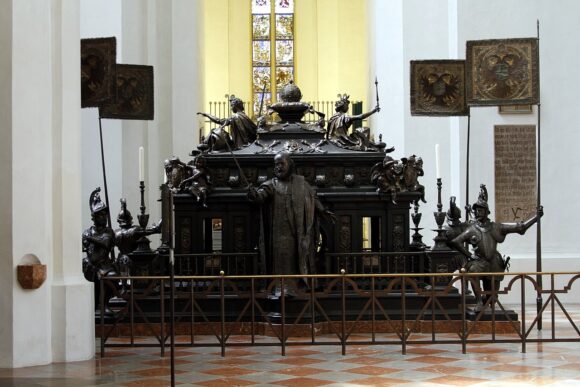
Munich, a city of only 13.000 inhabitants at the time, had a Cathedral with a capacity of 20.000. Today aside from the grandiose Gothic nave of 31 meters & the spectacular arches of its aisles the visitor can admire art treasures from the 14th to the 18th century. In addition, one can marvel at the monumental black marble sarcophagus of Emperor Ludwig IV of Bavaria built between 1619 and 1622. Finally, one can just sit and take in all the beauty of the series of Gothic stained-glass windows. He or she can also learn about the myths surrounding the Teufelstritt, or Devil’s Footstep, or climb up the south tower for a unique view of Munich’s cityscape & the nearby Bavarian Alps
